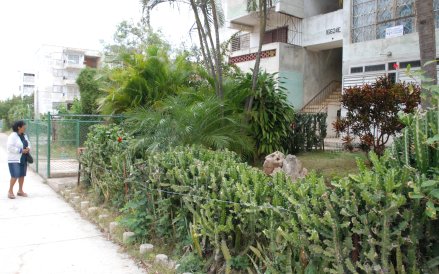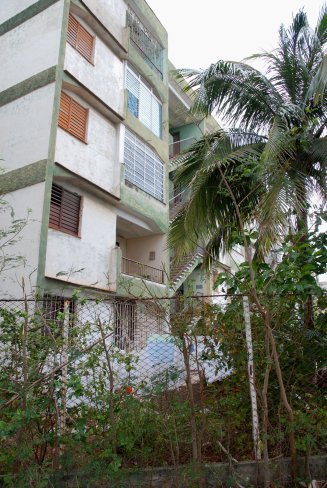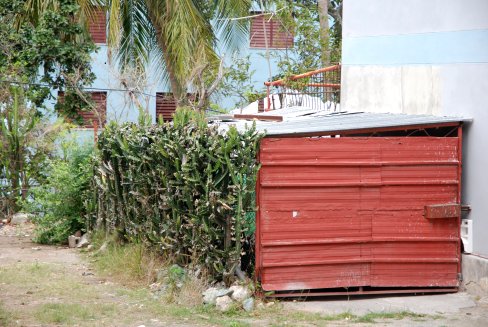Private Property in Cuba
Irina Echarry

I’ve lived in the Alamar housing projects on the east side of Havana since I was three years old. When we moved there, my parents thought they had found paradise. First because it was their first stable and independent home and second because the sea added a special touch to the complex.
But what my parents did not imagine was that this paradise would break up into small pieces and that some of their neighbors would come to own the land. The same land where, years ago, as a community effort, they planted the trees that shelter us from the sun today.
In the beginning the complex had extreme laws regarding the adornment of one’s apartment. For aesthetic reasons, you couldn’t paint the face of your apartment in a color different from the rest.

The areas in front and behind the buildings were communal. Activities were held there like meetings, parties or general clean-ups. We all felt responsible for our environment.
During the Special Period (economic crisis starting the early 1990s), people living on the ground floor began to fence off their territory. Since not everyone had the same economic resources, each created enclosures in their own way, with what they had.
The objective was to demarcate “what is mine” vs. what is shared. They built walls or fences of aluminum, cactus, and pieces of tin. As a result, the gardens that were once communal now belong to the neighbors downstairs. That is, private ownership was established.
For many it was a surprise. We grew up repeating that the revolution had eliminated this “hold-over from capitalism” forever. But it came back.
Over the years people have continued to improve on what they were initially able to do. It’s common to see very well defined and attended gardens, with beautiful flowers, while garbage accumulates in other nearby unclaimed areas of the grounds.

Even more problematic is that it is difficult to reach, and therefore maintain, the general cisterns that supply water to all the apartments because some areas are fenced and some are not.
The last straw occurred in Judith’s building.
They were without power for nearly three days because the repair vehicle could not reach the transformer. A hodge-podge of fences blocked its access. A wealthier neighbor bribed the repairmen to go over the barriers without the vehicle and solve the problem.
So that’s the way it is in the “model complex” that they attempted to create in Alamar. We have learned the advantages and disadvantages of private property. Not all of us are prepared for it.






Irina’s article opens a profound subject: the nature of private property. How does one respond meaningfully in 1000 characters? Almost impossible!
Private property is like fire. If harnessed and used constructively, it can be of enormous benefit to individuals and human society. If left to the manipulations of private individuals, it can give birth to selfish, exploitative, materialistic systems that impoverish individuals and degrade society.
Two examples of the latter are capitalism and bureaucratic state socialism.
Both maintain and are based on an “employer-employee” relationship in which the means of production are legally owned by one entity–the capitalists in the one, and the state in the other–and those who labor have the use-values they produce owned or controlled by the entity in power–the capitalists in the one and the bureaucracy in the other.
The problem’s not private property, but the capitalism-like state socialist system of Marxism.
i don’t believe anyone can or should own the earth, the water, the soil, the air.